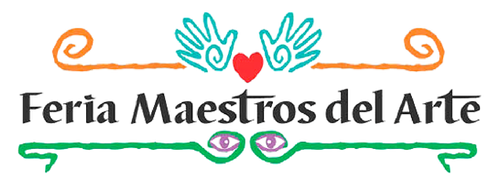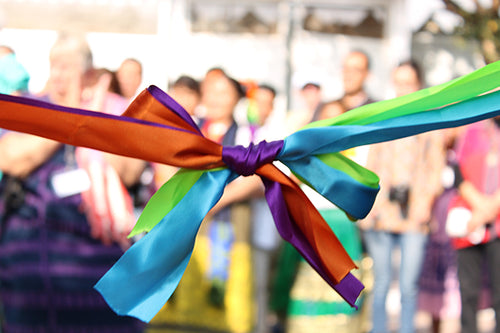
Emilio Molinero Hurtado Huipe, Tzintzuntzan, Michoacán
Miguel Angel Molinero Huipe, grandson of the renowned Emilio Molinero Hurtado who is featured in the landmark book “Great Masters of Mexican Folk Art,” is 26 years old and was born and lives in Tzintzuntzan, Michoacán. Emilio exemplifies the best in Mexico's handicrafts and has earned his place in the folkart community. His age prevents him from continuing his work but he has handed down his methods and secrets to his grandson.
One day, while wandering through the surrounding fields, Emilio discovered remains of some pre-Hispanic ceramics. The designs attracted him and he began to copy them in his own work. This story resembles that of the famed Juan Quezada of Mata Ortiz, Chihuahua who likewise found pottery shards of an ancient people and longed to recreate the beautiful pottery. One of the things you notice right away about Molinero pottery are the distinctive and unusual shapes.
Born into a family devoted to their heritage of making bruñido pottery, from his childhood at the age of 12 Miguel began to experiment with the decoration of pottery first as a game and then, in his later years, to see if it could be a profitable profession. Learning that this was a difficult life — making your living as a potter — he left Mexico to seek the “American dream” in the US. He returned after only five years realizing the US was not where his heart was.
He once again began to hand craft pottery as his beloved grandfather had done for so many years. Soon he was working on his own designs that led to winning a prize at every competition in which he participated. The technique Miguel uses is the same one that has been used since pre-Hispanic time.
First the clay must be selected. Two different types of clay are used from various locations in the hills of Chichuatiro surrounding their pueblo (village). Burros used to carry the clay back to their home but now their burro is the family truck.
The second step is kneading the clay. The two clays, white (tierra blanca) and earth tones (tierra colorada), are milled separately by hand to remove lumps or stones. In the end, a fine powder is left. The clay must be 60% white and 40% earth tone. The dry powder is then stirred and water is added. The clay is kneaded little by little until it becomes the desired consistency — it cannot be watery or hard. It is made into balls and stored for at least a week — the longer it “rests,” the better the quality of the clay will be for shaping.
The third step is modeling and shaping the clay into the desired shape. A piece of clay is placed on a large stone and smoothed with the palm of the hand (sometimes with the help of a smooth stone) using small, soft strokes until it is flat and round. Then it is placed into a mold consisting of two parts that are joined together once the piece has been left to dry for 16 hours. The two pieces are removed from their molds and joined together using a small cuchillito (small knife) to remove the seam. All impurities and small cracks are removed and repaired using a little water and a damp cloth. Once it has been completely smoothed, it is allowed to sit for 24 hours.
Next the color of the piece is decided upon, which requires three colors: white, red and black. These are natural pigments collected from different parts of the state — white from Zirahuén, red from Acuitzio near Tzintzuntzan, and the black is taken from black ants. All the colors are hand-milled to obtain a fine powder to which water is added little by little, stirring constantly with a wooden stick. The liquid color is pushed through a cloth to remove all the lumps and ensure the end product has no lumps or impurities. It stands for 24 hours during which time the water separates from the earth. The excess water is removed and it is ready to use.
In decorating the pot, the base color is white which is spread over the entire piece with a thick brush (normally made of the hair from a squirrel’s tail wired to a small piece of wood). Five layers of the white are put on each piece; however, on each layer a piece of paper is placed around the pot in a particular location before the new layer of white is applied. This leaves an almost invisible line to guide the painter as the darker colors are later applied.
Very fine brushes are used to paint the straight lines around the entire piece as well as the greco (geometric shapes) designs. This requires a very steady hand for each line to be accurate and exact. Some designs call for alternate colors to be applied. Now the bruñido (burnishing) begins. After the decorations are completed and the pot is left to dry for a short time, a bruñidor (a very smooth pyrite stone the size of a walnut attached to a handle) is used to burnish the piece. It is gently rubbed over and over and over the pot uniformly, leaving a shiny, finished surface.
The next step is firing the pot. All the artist’s work is for naught if the firing process is not done exactly right. The huge furnace made by hand of mud and clay is filled with the finished pots, each carefully placed inside ensuring they do not touch each other. The kiln has a small entrance that resembles a cave. This is where the wood is lighted and left for about 8 hours. When the fire is very hot, more logs are added for another five hours until all the pieces of wood are red hot. This is the most delicate part of the entire process for if the temperature is not elevated gradually, the pots will break or explode.
The last step is cleaning. It is the least difficult and most rewarding part of the entire process for here is where the artist can see the results of his labor. The kiln must be completely cooled down as each piece is carefully removed. The technique described above was inherited from Molinero's ancestors and used since pre-Hispanic times. It has not changed. It is tempting to replace the old ways with store-bought brushes and clay, however, this family remains true to their tradition.
Miguel Angel Molinero Huipe has won numerous prizes and recognition for his work.Hidalgo 238.
Hidalgo 238, Tzintzuntzan
Tzintzuntzan, Michoacán
434 344 3138

